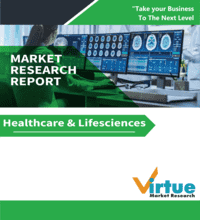Medical Products Market Size (2025-2030)
The Medical Products Market was valued at USD 478.36 billion in 2024 and is projected to reach a market size of USD 655.39 billion by the end of 2030. Over the forecast period of 2025-2030, the market is projected to grow at a CAGR of 6.5%.
Medical Products encompass a comprehensive range of healthcare solutions including medical devices, pharmaceuticals, diagnostic equipment, and consumable supplies that are essential for patient care, disease prevention, and treatment across diverse healthcare settings. This sector has experienced substantial growth in the 21st century, driven by an aging global population, increasing prevalence of chronic diseases, and continuous technological advancements in medical technology. With the ongoing evolution of healthcare delivery models and the increasing focus on personalized medicine, the demand for innovative medical products continues to expand, creating significant opportunities for manufacturers, healthcare providers, and patients worldwide.
Key Market Insights:
According to the World Health Organization's 2024 Global Health Report, approximately 1.3 billion people worldwide lack access to essential medical products, representing a significant market opportunity worth an estimated $180 billion annually. This gap is particularly pronounced in developing countries, where 67% of healthcare facilities report inadequate access to basic medical supplies and equipment, driving increased investment in healthcare infrastructure and medical product distribution networks.
Research from McKinsey & Company indicates that healthcare systems implementing advanced medical technologies experience an average 23% improvement in patient outcomes and a 19% reduction in treatment costs. The study, encompassing 850 healthcare facilities across 42 countries, demonstrated that institutions utilizing cutting-edge medical devices and diagnostic equipment achieved 31% faster diagnosis times and 28% shorter hospital stays compared to facilities using conventional medical products.
A comprehensive survey conducted by the International Medical Device Regulators Forum revealed that 78% of healthcare providers plan to increase their medical product procurement budgets by an average of 14% over the next three years. Additionally, 84% of respondents indicated that product quality and clinical efficacy are their primary selection criteria, while 72% emphasized the importance of cost-effectiveness in their purchasing decisions for medical supplies and equipment.
Medical Products Market Drivers:
The rapidly aging global population and the escalating prevalence of chronic diseases are fundamentally driving unprecedented demand for medical products across all healthcare sectors and geographic regions.
The global demographic shift toward an aging population represents one of the most significant drivers of medical product demand, with individuals aged 65 and older expected to reach 1.6 billion by 2050, representing a 127% increase from 2019 levels. This demographic transition is accompanied by a corresponding increase in age-related conditions such as cardiovascular disease, diabetes, arthritis, and neurodegenerative disorders, each requiring specialized medical products for effective management and treatment. According to the International Diabetes Federation, the global diabetes population is projected to reach 783 million by 2045, creating substantial demand for glucose monitoring devices, insulin delivery systems, and related medical supplies. Similarly, cardiovascular disease affects approximately 523 million people globally, driving demand for cardiac monitoring equipment, interventional devices, and pharmaceutical products. The aging population also requires more frequent medical interventions, with individuals over 65 utilizing healthcare services at rates 3.5 times higher than younger demographics, translating to increased consumption of medical devices, pharmaceuticals, and diagnostic products. Healthcare systems worldwide are adapting to these demographic changes by investing in geriatric care capabilities, specialized medical equipment, and age-appropriate treatment protocols.
Technological advancements and the integration of digital health solutions are revolutionizing medical product development and creating new market opportunities across diverse healthcare applications.
The convergence of artificial intelligence, Internet of Things (IoT), and advanced materials science is transforming medical product capabilities and expanding their applications across healthcare settings. AI-powered diagnostic devices now achieve accuracy rates exceeding 95% in many clinical applications, while connected medical devices enable real-time patient monitoring and data-driven treatment decisions. Telemedicine adoption has increased by 3,800% since 2019, creating demand for remote monitoring devices, digital therapeutics, and connected health solutions. Robotic surgery systems, which enable minimally invasive procedures with improved precision, have demonstrated 40% faster recovery times and 60% fewer complications compared to traditional surgical approaches. Advanced biomaterials and 3D printing technologies are enabling personalized medical devices and implants, with the market for 3D-printed medical devices projected to reach $6.8 billion by 2028. Nanotechnology applications in drug delivery systems are improving treatment efficacy while reducing side effects, with nano-based therapeutics showing 85% better target specificity than conventional formulations.
Medical Products Market Restraints and Challenges:
The medical products market faces significant regulatory complexity and stringent approval processes that can delay product launches and increase development costs substantially. FDA approval timelines for medical devices average 18-24 months, while pharmaceutical products require 10-15 years from development to market, creating substantial barriers for innovation and market entry. Manufacturing cost pressures continue to intensify, with raw material costs increasing by an average of 12% annually over the past three years, while healthcare systems demand cost reductions. Quality control and compliance requirements add approximately 15-20% to production costs, while maintaining consistency across global manufacturing facilities presents ongoing challenges. Supply chain disruptions, highlighted during the COVID-19 pandemic, continue to affect product availability and pricing, with 68% of manufacturers reporting ongoing material shortages.
Medical Products Market Opportunities:
The medical products market presents substantial growth opportunities driven by emerging markets expansion, technological innovation, and evolving healthcare delivery models. Developing countries represent the fastest-growing segment, with healthcare infrastructure investments projected to reach $2.3 trillion by 2030, creating significant demand for medical products across all categories. Digital health integration offers opportunities for connected medical devices, remote monitoring solutions, and AI-powered diagnostic tools, with the digital therapeutics market alone expected to reach $32.1 billion by 2028. Personalized medicine approaches are creating demand for companion diagnostics, genomic testing products, and targeted therapies, representing a $3.2 trillion market opportunity. Home healthcare applications are expanding rapidly, with 89% of patients preferring home-based care when possible, driving demand for portable medical devices, home diagnostic kits, and remote monitoring systems.
MEDICAL PRODUCTS MARKET REPORT COVERAGE:
|
REPORT METRIC |
DETAILS |
|
Market Size Available |
2024 - 2030 |
|
Base Year |
2024 |
|
Forecast Period |
2025 - 2030 |
|
CAGR |
6.5% |
|
Segments Covered |
By Product Type, application, end user, , Distribution Channel and Region |
|
Various Analyses Covered |
Global, Regional & Country Level Analysis, Segment-Level Analysis, DROC, PESTLE Analysis, Porter’s Five Forces Analysis, Competitive Landscape, Analyst Overview on Investment Opportunities |
|
Regional Scope |
North America, Europe, APAC, Latin America, Middle East & Africa |
|
Key Companies Profiled |
Johnson & Johnson, Medtronic plc, Abbott Laboratories, and Stryker Corporation |
Medical Products Market Segmentation:
Medical Products Market Segmentation: By Product Type
- Medical Devices
- Pharmaceuticals
- Medical Equipment
- Diagnostics
- Consumables & Disposables
In 2024, the pharmaceuticals segment dominated the global medical products market with approximately 42.6% revenue share, driven by the continuous development of new therapeutic compounds and the increasing prevalence of chronic diseases requiring long-term pharmaceutical interventions. The segment includes prescription medications, over-the-counter drugs, and specialty pharmaceuticals, with oncology, cardiovascular, and central nervous system therapeutics representing the largest subsegments by revenue.
The medical devices segment is projected to grow at the fastest CAGR of 8.2% during the forecast period, fueled by technological advancements in minimally invasive procedures, surgical robotics, and implantable devices. This growth is particularly strong in cardiovascular devices, orthopedic implants, and neurological devices, where innovation continues to improve patient outcomes while expanding treatment options.
Medical Products Market Segmentation: By Application
- Cardiology
- Orthopedics
- Neurology
- Oncology
- Diabetes Care
- Wound Care
- Respiratory Care
- Others
The cardiology segment held the largest market share of approximately 18.7% in 2024, reflecting the high prevalence of cardiovascular diseases globally and the substantial cost associated with cardiac care products. This segment includes cardiac devices, monitoring equipment, interventional products, and cardiovascular pharmaceuticals, with particular strength in emerging markets where cardiovascular disease rates are increasing rapidly due to lifestyle changes and aging populations.
The oncology segment is expected to witness the highest growth rate during the forecast period, with a CAGR of 9.8%. This growth is driven by increasing cancer incidence rates, advancing precision medicine approaches, and the development of innovative therapeutic products including immunotherapy, targeted therapy, and personalized treatment protocols. The segment benefits from substantial research and development investments and premium pricing for breakthrough therapies, creating significant revenue opportunities for manufacturers.
Medical Products Market Segmentation: By End-User
- Hospitals
- Clinics
- Home Healthcare
- Diagnostic Centers
- Ambulatory Surgery Centers
- Others
Hospitals accounted for the largest revenue share of approximately 47.3%, driven by their role as primary treatment centers for complex medical conditions and their substantial purchasing power for high-value medical equipment and pharmaceutical products. Hospital procurement decisions significantly influence market dynamics, with large health systems often negotiating volume contracts that impact pricing and product adoption patterns across the healthcare industry.
The home healthcare segment is projected to experience the fastest growth rate during the forecast period, with a CAGR of 11.4%. This growth is driven by demographic trends, cost containment initiatives, and patient preferences for home-based care when clinically appropriate. The segment includes portable medical devices, home diagnostic products, and remote monitoring systems, with particular strength in chronic disease management and post-acute care applications.
Medical Products Market Segmentation: By Distribution Channel
- Direct Sales
- Retail Pharmacies
- Online Pharmacies
- Distributors
Direct sales channels dominated the market with approximately 38.9% share, particularly for high-value medical equipment and hospital products where technical support and customization are important factors. This channel is preferred for complex medical devices, specialized pharmaceuticals, and products requiring extensive training or implementation support, enabling manufacturers to maintain direct relationships with healthcare providers.
Online pharmacies represent the fastest-growing distribution channel with a projected CAGR of 12.7% during the forecast period. This growth is driven by consumer convenience preferences, competitive pricing, and improved regulatory frameworks supporting online pharmaceutical sales. The channel has gained particular momentum in chronic disease management, where patients benefit from automated refills and direct-to-consumer delivery services.
Medical Products Market Segmentation: Regional Analysis
- North America
- Europe
- Asia-Pacific
- Latin America
- Middle East and Africa
North America maintained its leadership position in the global medical products market in, accounting for 39.4% of total revenue. This dominance is attributed to advanced healthcare infrastructure, high per-capita healthcare spending, and strong regulatory frameworks supporting medical product innovation. The United States represents the largest single market globally, with healthcare expenditures exceeding $4 trillion annually and robust demand across all medical product categories.
The Asia-Pacific region is anticipated to witness the highest growth rate during the forecast period, with a CAGR of 8.9%. This growth is driven by rapidly expanding healthcare infrastructure, increasing healthcare access in emerging economies, and growing middle-class populations with rising healthcare expectations. Countries such as China, India, and Japan are experiencing particularly strong demand for medical products, supported by government healthcare initiatives and increasing foreign investment in healthcare infrastructure.
COVID-19 Impact Analysis on the Global Medical Products Market:
The COVID-19 pandemic initially created significant disruptions in the medical products market, with supply chain interruptions affecting product availability and manufacturing capacity. However, the crisis ultimately accelerated market growth by highlighting the critical importance of healthcare preparedness and medical product innovation. Emergency use authorizations expedited the development and approval of COVID-19 related products, while increased healthcare spending supported market expansion across multiple categories.
The pandemic permanently altered healthcare delivery models, with telemedicine adoption increasing by 3,800% and creating sustained demand for remote monitoring devices, diagnostic products, and digital health solutions.
Latest Trends/ Developments:
Artificial intelligence integration in medical products is accelerating rapidly, with AI-powered diagnostic devices achieving FDA approval at increasing rates and demonstrating superior accuracy in medical imaging, pathology, and clinical decision support applications. Major manufacturers are investing heavily in AI capabilities, with companies like Siemens Healthineers and GE Healthcare incorporating machine learning algorithms into their medical imaging platforms to improve diagnostic accuracy and workflow efficiency.
Sustainability initiatives are becoming increasingly important in medical product development, with manufacturers focusing on eco-friendly materials, recyclable packaging, and reduced environmental impact throughout product lifecycles. Johnson & Johnson announced a comprehensive sustainability program targeting carbon neutrality by 2030, while Medtronic launched initiatives to reduce single-use device waste through reprocessing and recycling programs.
Strategic partnerships and consolidation continue to reshape the medical products landscape as companies seek to expand their technological capabilities and market reach. In March 2023, Abbott acquired Cardiovascular Systems Inc. for $890 million to strengthen its cardiovascular device portfolio, while Stryker announced partnerships with multiple digital health companies to integrate connected technologies into its surgical and orthopedic product lines, demonstrating the industry's commitment to digital transformation.
Key Players:
- Johnson & Johnson
- Medtronic plc
- Abbott Laboratories
- Stryker Corporation
- Boston Scientific Corporation
- Becton, Dickinson and Company
- Siemens Healthineers AG
- GE Healthcare
- Philips Healthcare
- Baxter International Inc.
- Zimmer Biomet Holdings
- Smith & Nephew plc
Chapter 1. Medical Products Market– Scope & Methodology
1.1. Market Segmentation
1.2. Scope, Assumptions & Limitations
1.3. Research Methodology
1.4. Primary Sources`
1.5. Secondary Sources
Chapter 2. Medical Products Market– Executive Summary
2.1. Market Size & Forecast – (2025 – 2030) ($M/$Bn)
2.2. Key Trends & Insights
2.2.1. Demand Side
2.2.2. Supply Side
2.3. Attractive Investment Propositions
2.4. COVID-19 Impact Analysis
Chapter 3. Medical Products Market– Competition Scenario
3.1. Market Share Analysis & Company Benchmarking
3.2. Competitive Strategy & Development Scenario
3.3. Competitive Pricing Analysis
3.4. Supplier-Distributor Analysis
Chapter 4. Medical Products Market- Entry Scenario
4.1. Regulatory Scenario
4.2. Case Studies – Key Start-ups
4.3. Customer Analysis
4.4. PESTLE Analysis
4.5. Porters Five Force Model
4.5.1. Bargaining Power of Suppliers
4.5.2. Bargaining Powers of Customers
4.5.3. Threat of New Entrants
4.5.4. Rivalry among Existing Players
4.5.5. Threat of Substitutes
Chapter 5. Medical Products Market- Landscape
5.1. Value Chain Analysis – Key Stakeholders Impact Analysis
5.2. Market Drivers
5.3. Market Restraints/Challenges
5.4. Market Opportunities
Chapter 6. Medical Products Market– By Product Type
6.1 Introduction/Key Findings
6.2 Medical Devices
6.3 Pharmaceuticals
6.4 Medical Equipment
6.5 Diagnostics
6.6 Consumables & Disposables
6.7 Y-O-Y Growth trend Analysis By Product Type
6.8 Absolute $ Opportunity Analysis By Product Type, 2025-2030
Chapter 7. Medical Products Market– By Application
7.1 Introduction/Key Findings
7.2 Cardiology
7.3 Orthopedics
7.4 Neurology
7.5 Oncology
7.6 Diabetes Care
7.7 Wound Care
7.8 Respiratory Care
7.9 Others
7.10 Y-O-Y Growth trend Analysis By Application
7.11 Absolute $ Opportunity Analysis By Application , 2025-2030
Chapter 8. Medical Products Market– By End-User
8.1 Introduction/Key Findings
8.2 Hospitals
8.3 Clinics
8.4 Home Healthcare
8.5 Diagnostic Centers
8.6 Ambulatory Surgery Centers
8.7 Others
8.8 Y-O-Y Growth trend Analysis End-User
8.9 Absolute $ Opportunity Analysis End-User , 2025-2030
Chapter 9. Medical Products Market– By Distribution Channel
9.1 Introduction/Key Findings
9.2 Direct Sales
9.3 Retail Pharmacies
9.4 Online Pharmacies
9.5 Distributors
9.6 Y-O-Y Growth trend Analysis Distribution Channel
9.7 Absolute $ Opportunity Analysis Distribution Channel , 2025-2030
Chapter 10. Medical Products Market, By Geography – Market Size, Forecast, Trends & Insights
10.1. North America
10.1.1. By Country
10.1.1.1. U.S.A.
10.1.1.2. Canada
10.1.1.3. Mexico
10.1.2. By Product Type
10.1.3. By End-User
10.1.4. By Application
10.1.5. Distribution Channel
10.1.6. Countries & Segments - Market Attractiveness Analysis
10.2. Europe
10.2.1. By Country
10.2.1.1. U.K.
10.2.1.2. Germany
10.2.1.3. France
10.2.1.4. Italy
10.2.1.5. Spain
10.2.1.6. Rest of Europe
10.2.2. By Product Type
10.2.3. By End-User
10.2.4. By Application
10.2.5. Distribution Channel
10.2.6. Countries & Segments - Market Attractiveness Analysis
10.3. Asia Pacific
10.3.1. By Country
10.3.1.2. China
10.3.1.2. Japan
10.3.1.3. South Korea
10.3.1.4. India
10.3.1.5. Australia & New Zealand
10.3.1.6. Rest of Asia-Pacific
10.3.2. By Product Type
10.3.3. By Distribution Channel
10.3.4. By Application
10.3.5. End-User
10.3.6. Countries & Segments - Market Attractiveness Analysis
10.4. South America
10.4.1. By Country
10.4.1.1. Brazil
10.4.1.2. Argentina
10.4.1.3. Colombia
10.4.1.4. Chile
10.4.1.5. Rest of South America
10.4.2. By Distribution Channel
10.4.3. By Application
10.4.4. By Product Type
10.4.5. End-User
10.4.6. Countries & Segments - Market Attractiveness Analysis
10.5. Middle East & Africa
10.5.1. By Country
10.5.1.4. United Arab Emirates (UAE)
10.5.1.2. Saudi Arabia
10.5.1.3. Qatar
10.5.1.4. Israel
10.5.1.5. South Africa
10.5.1.6. Nigeria
10.5.1.7. Kenya
10.5.1.10. Egypt
10.5.1.10. Rest of MEA
10.5.2. By End-User
10.5.3. By Distribution Channel
10.5.4. By Application
10.5.5. Product Type
10.5.6. Countries & Segments - Market Attractiveness Analysis
Chapter 11. MEDICAL PRODUCTS MARKET– Company Profiles – (Overview, Portfolio, Financials, Strategies & Developments)
11.1 Johnson & Johnson
11.2 Medtronic plc
11.3 Abbott Laboratories
11.4 Stryker Corporation
11.5 Boston Scientific Corporation
11.6 Becton, Dickinson and Company
11.7 Siemens Healthineers AG
11.8 GE Healthcare
11.9 Philips Healthcare
11.10 Baxter International Inc.
11.11 Zimmer Biomet Holdings
11.12 Smith & Nephew plc
Download Sample
Choose License Type
2500
4250
5250
6900
Frequently Asked Questions
The Medical Products Market was valued at USD 478.36 billion in 2024 and is projected to reach a market size of USD 655.39 billion by the end of 2030. Over the forecast period of 2025-2030, the market is projected to grow at a CAGR of 6.5%.
The rapidly aging global population and the escalating prevalence of chronic diseases are the primary drivers propelling the global medical products market growth.
Based on Product Type, the Global Medical Products Market is segmented into Medical Devices, Pharmaceuticals, Medical Equipment, Diagnostics, and Consumables & Disposables.
North America is the most dominant region for the Global Medical Products Market.
Johnson & Johnson, Medtronic plc, Abbott Laboratories, and Stryker Corporation are the key players operating in the Global Medical Products Market.



